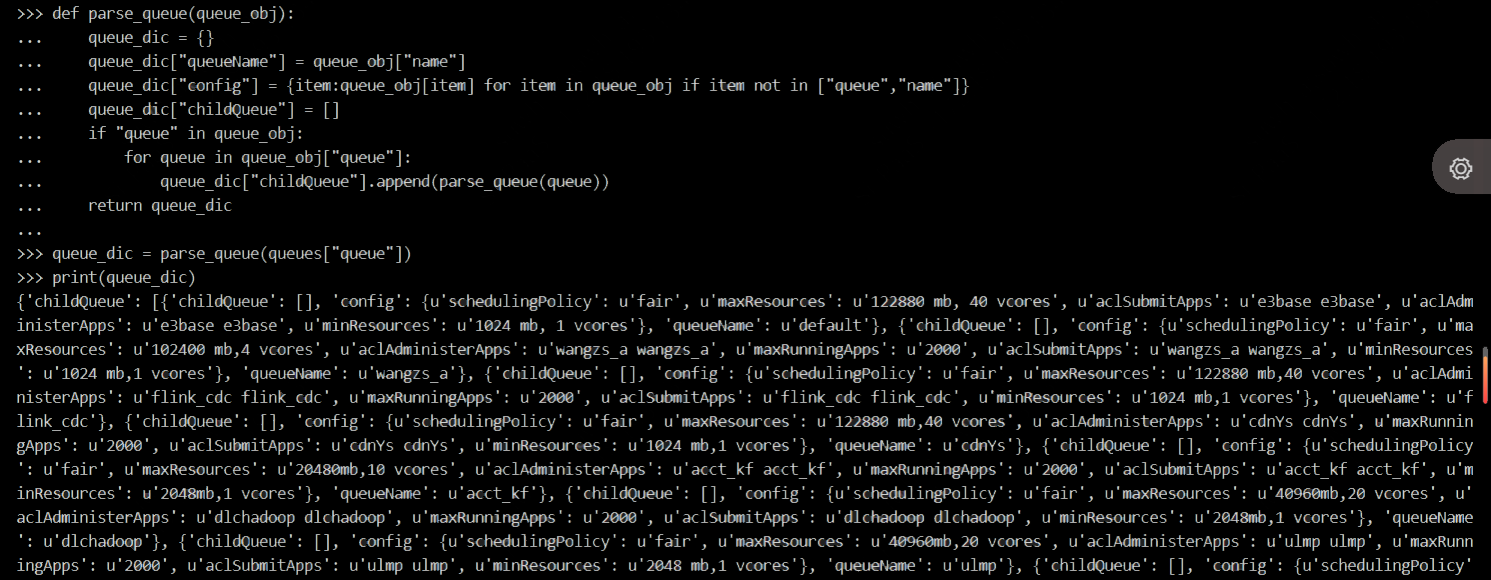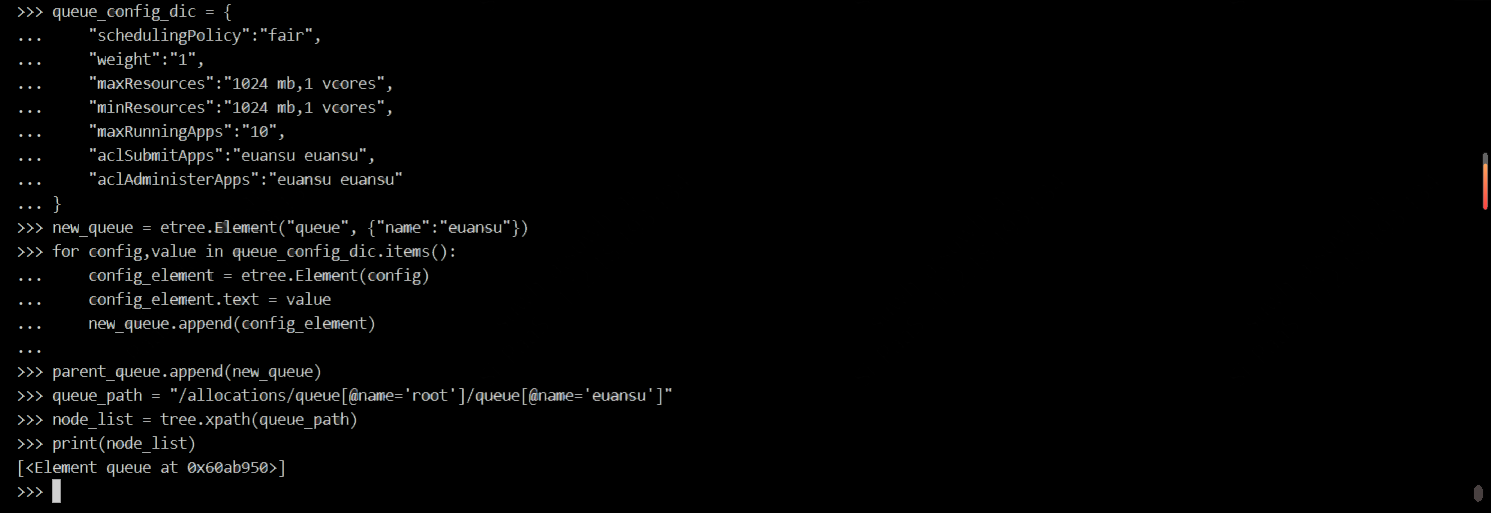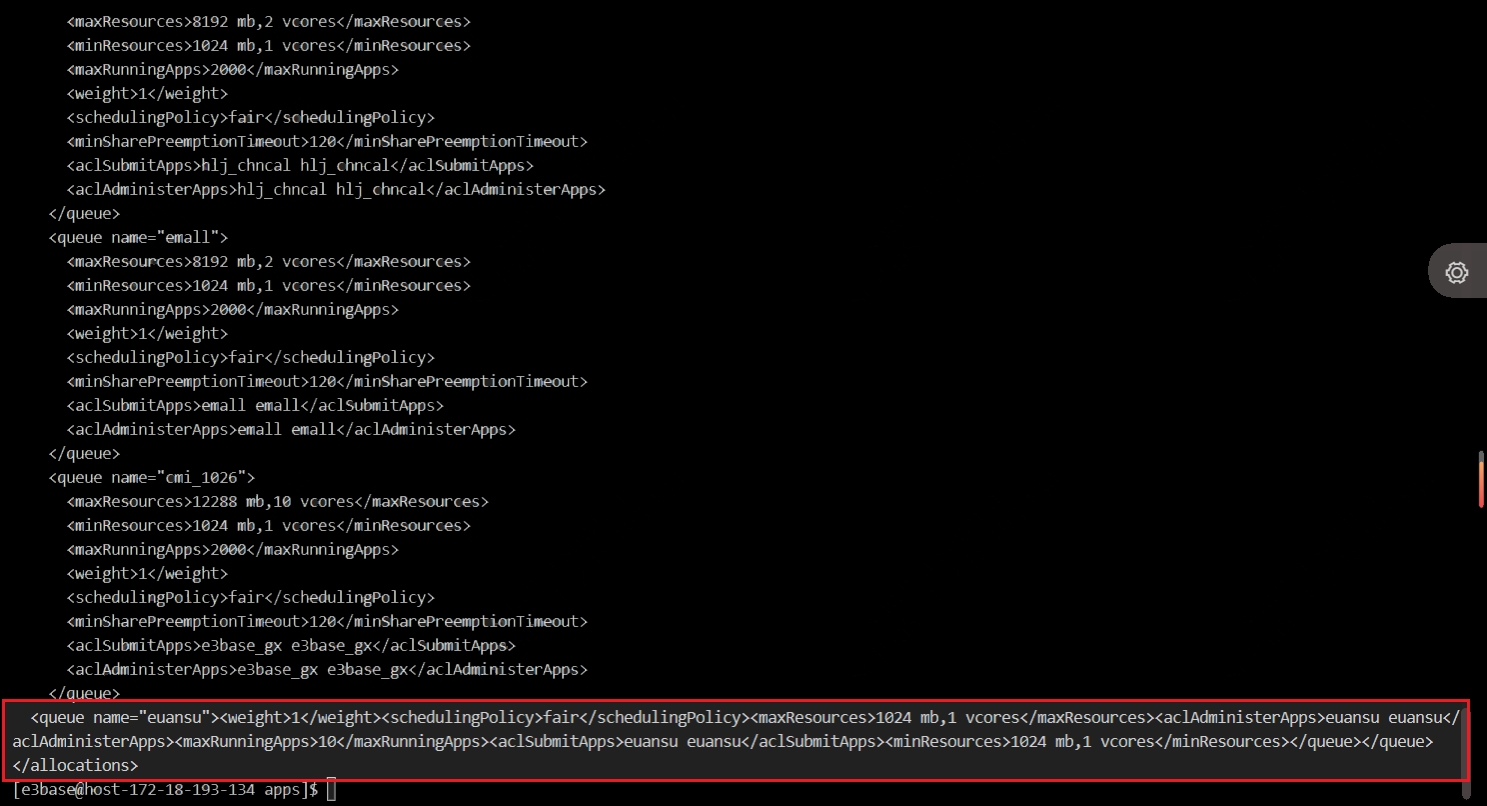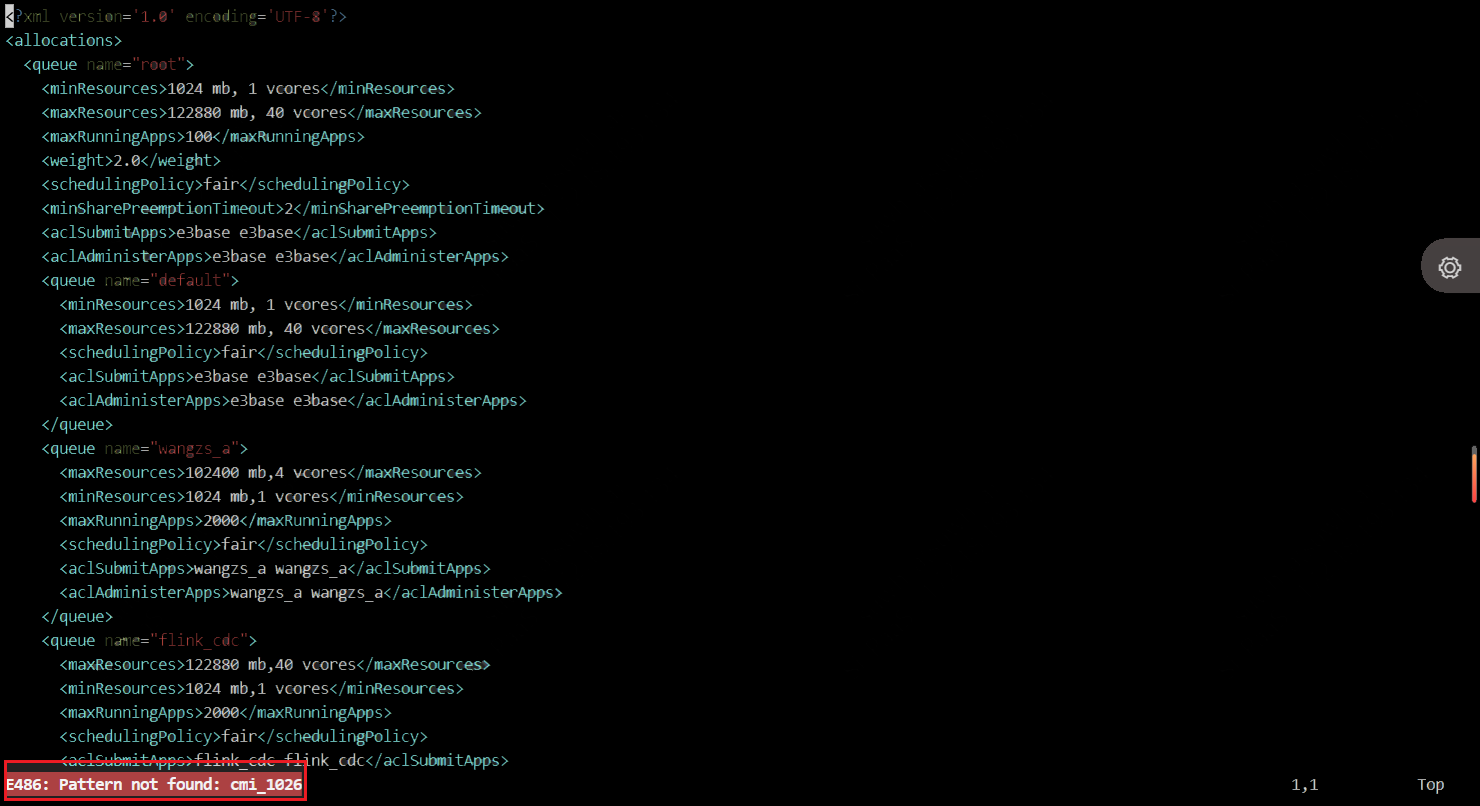import xmltodict # xmltodict from lxml import etree # 加载xml文件 tree = etree . parse ( ' /e3base/apps/fair-scheduler.xml ' ) # 将已解析的XML树对象 tree 转换为一个XML字符串,然后将这个XML字符串赋值给变量 config config = etree . tostring ( tree )
# 将xml字符串转换为Python能够处理的字典格式 queue_config = xmltodict . parse ( xml_input = config , attr_prefix = "" , cdata_key = "" )
# yarn公平调度器的配置文件中,以 allocations 标签作为开始和结束,这里解析队列信息并不需要 allocations 标签 queues = queue_config [ ' allocations ' ]
# 从队列字典中获取当前配置文件的队列信息 # 这里的队列是从 root 队列开始解析的,因此需要考虑子队列存在的情况 # 这里用迭代的方法,解析出来了配置文件中所有的队列信息 def parse_queue ( queue_obj ): queue_dic = {} queue_dic [ " queueName " ] = queue_obj [ " name " ] queue_dic [ " config " ] = { item : queue_obj [ item ] for item in queue_obj if item not in [ " queue " , " name " ]} queue_dic [ " childQueue " ] = [] if " queue " in queue_obj : for queue in queue_obj [ " queue " ]: queue_dic [ " childQueue " ]. append ( parse_queue ( queue )) return queue_dic
import xmltodict # xmltodict from lxml import etree # 加载xml文件 tree = etree . parse ( ' /e3base/apps/fair-scheduler.xml ' ) # 新建节点之前,首先要确认节点是否存在 queue_path = " /allocations/queue[@name='root']/queue[@name='default'] " # 列表长度大于零,说明该节点已存在,则不能进行创建 node_list = tree . xpath ( queue_path )
# 列表长度等于零,进行队列的新建 # 获取节点父节点的位置 parent_queue_path = " /allocations/queue[@name='root'] " parent_queue_list = tree . xpath ( parent_queue_path ) parent_queue = parent_queue_list [ 0 ]
# 准备队列的配置信息 queue_config_dic = { " schedulingPolicy " : " fair " , " weight " : " 1 " , " maxResources " : " 1024 mb,1 vcores " , " minResources " : " 1024 mb,1 vcores " , " maxRunningApps " : " 10 " , " aclSubmitApps " : " euansu euansu " , " aclAdministerApps " : " euansu euansu " } # 构造队列节点 new_queue = etree . Element ( " queue " , { " name " : " euansu " }) # 添加队列的相关配置 for config , value in queue_config_dic . items (): config_element = etree . Element ( config ) config_element . text = value new_queue . append ( config_element ) # 添加到父队列下 parent_queue . append ( new_queue ) # 判断队列是否添加成功 queue_path = " /allocations/queue[@name='root']/queue[@name='euansu'] " node_list = tree . xpath ( queue_path )
# 将修改后的XML对象写入到xml文件中 tree . write ( " /e3base/apps/fair-scheduler-updated.xml " , pretty_print = True , encoding = " utf-8 " ) # 打开生成的文件,队列添加成功,但格式有点混乱,需要进行优化
root = etree . parse ( filename ). getroot () self . indent ( root ) etree . ElementTree ( root ). write ( filename ) import xmltodict # xmltodict from lxml import etree # 加载xml文件 tree = etree . parse ( ' /e3base/apps/fair-scheduler-updated.xml ' ) # 获取要修改的xml节点 queue_node = tree . xpath ( " /allocations/queue[@name='root']/queue[@name='cmi_1026'] " ) queue_node = queue_node [ 0 ]
max_resources_element = queue_node . find ( " maxResources " ) max_resources_element . text = " 2048 mb, 2 vcores " tree . write ( " /e3base/apps/fair-scheduler-updated.xml " , pretty_print = True , encoding = " utf-8 " )
import xmltodict # xmltodict from lxml import etree # 加载xml文件 tree = etree . parse ( ' /e3base/apps/fair-scheduler-updated.xml ' ) # 获取要删除的xml节点 queue_node = tree . xpath ( " /allocations/queue[@name='root']/queue[@name='cmi_1026'] " ) queue_node = queue_node [ 0 ] # 获取要删除xml节点的父节点 parent_node = tree . xpath ( " /allocations/queue[@name='root'] " ) parent_node = parent_node [ 0 ] # 删除子队列 parent_node . remove ( queue_node ) # 将删除后的xml文件写入配置文件中 tree . write ( " /e3base/apps/fair-scheduler-updated.xml " , encoding = " utf-8 " , xml_declaration = True )











